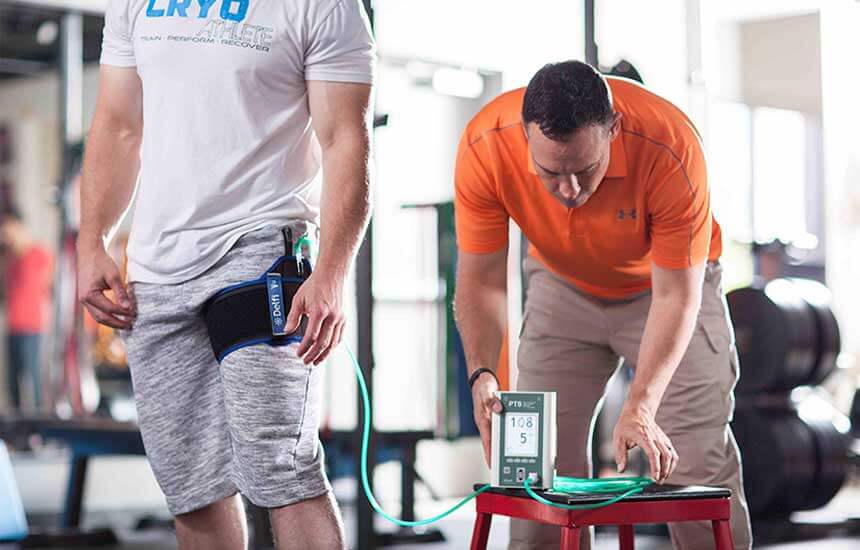What Is BFR Training?
Blood flow restriction training, also known as occlusion training or vascular occlusion training, induces muscle hypertrophy to help patients improve their strength, grow their muscles, and reduce pain. This technique uses low-load exercise to allow your body to feel fatigued without muscle tissue breaking down.
After an injury or surgery, a patient may have mobility or weight-bearing restrictions to protect their repaired body part and promote healing. Blood flow restriction training can be used as an alternative therapy to improve strength and function as your joints, tendons, and tissues heal. As treatment progresses, blood flow restriction can be utilized during weight-bearing activities to improve muscle and joint tolerance to increasingly difficult exercises.
How Does Blood Flow Restriction Training Work?
A key component of blood flow restriction training is blocking blood flow from the muscle to the heart. The extra blood signals to the brain that the muscle is working harder than it actually is, which helps build up strength.
BFR therapy utilizes a tourniquet (similar to a blood pressure cuff) to reduce blood flow to the extremity and enhance muscle fiber activation. This technology allows IBJI clinicians to improve the efficiency of treatment and reduce the length of rehabilitation.
Each IBJI rehabilitation location offering blood flow restriction training uses Delfi Personalized Tourniquet System (PTS) equipment. Our clinicians use software-generated, personalized occlusion pressures rather than the manual ones that traditional BFR systems use. The Delfi system allows the IBJI rehabilitation team to provide more personalized, safe, efficient, and accurate intervention.
Blood Flow Restriction Therapy Benefits
When done under the guidance of a specially-trained physical therapist, blood flow restriction therapy is a safe and effective treatment option for many patients recovering from surgery or an injury.
With this technique, patients can see:
- Reduced pain
- Improved strength
- Improved muscle growth
- Improved tissue healing
- Improvement with chronic muscle strain/guarding
Learn More about Blood Flow Restriction Therapy
FAQs about Blood Flow Restriction
How Often Should You Do Restricted Blood Flow Training?
We typically use BFR training up to three times a week with our patients. Rehabilitation sessions last about one hour, often starting with soft tissue mobilization and warm-up. Once BFR exercises begin, each exercise can take up to eight minutes. Depending on the patient, three to five exercises with BFR are performed.
Each exercise is completed in four sets. The first set is 30 repetitions with a 30-second rest period, but the pressure in the cuff stays inflated while the patient is resting. This is followed by three sets of 15 of the same exercise.
An entire BFR session consists of the following:
- 30 reps, 30-second rest
- 15 reps, 30-second rest
- 15 reps, 30-second rest
- 15 reps, then done and deflated
The rest period between different exercises is a full minute.
Who Shouldn’t Include Blood Flow Restriction Therapy as Part of Their Rehabilitation?
Blood flow restriction training isn’t suitable for everyone and should be avoided by people with certain conditions, including:
- Vascular disease
- Diabetes
- Severe hypertension
- Cancer
- Pregnancy
- Sickle cell disease
- A history of deep vein thrombosis
The experts at IBJI can help develop a customized care plan and will work with you to determine if BFR training is a safe therapy option.
Does BFR Training Hurt?
When done correctly, blood flow restriction training should not be painful. Our patients describe the feeling as a “strong squeeze.”






